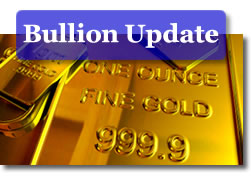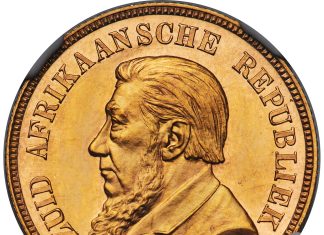Good Morning,
Gold prices stabilized near the $1220 price per ounce marker following the Greek debt downgrade by Moody’s yesterday, however neither it nor the euro appeared to take off in opposite directions with any serious vigor after the announcement.
While it is too early to state the currency, bond, and metals markets have now priced in the ‘worst-case’ Greek scenario, it does appear that they are at least getting used to current conditions and new developments by not treating every single news release with an overreaction.
It of course, (it is mid June, after all) could also be the case that a number of market players have already decided to leave their desks and try to decompress from what has certainly been a more than stressful spring. Suitcases packed, said traders might just be spotted…in Greece, staring at the blue Aegean Sea with nostalgia for the ‘good old days’ –whatever those were.
In overseas economic news this morning, British inflation slowed last month whilst it still remains above the BoE’s target, and German investor confidence took a hit in June, due, of course, to the sovereign debt crisis. Not that things are all that bad in the country: unemployment fell to 7.7% in May while the Bundesbank raised its growth projections to 1.9% for the current year. However, banks are apparently sitting on money, unwilling to lend to each other and this has undermined confidence levels among investors hoping that credit will keep flowing to firms and households.
Thus, markets started their Tuesday sessions in largely the same place where they had left off on Monday. The euro remained just above the 1.22 mark while the US dollar slipped an additional 0.39 on the index (reaching 86.42). Crude oil was slightly ahead, lifted by the optimism surrounding the EU industrial output figures’ release the other day. The Nikkei index did practically nothing overnight and US equity market futures were slightly higher this morning as the focus among most participants turned to the release of home builder’s index figures and the Empire State Manufacturing numbers for June.
Others were concentrating on the possible fallout from the six-notch large downgrade of BP by Fitch’s Ratings. The firm looks to be a sure-fire bet for crucifixion before President Obama is through with his White House address on the monumental ecological Armageddon that the Gulf spill has become. More than 200 lawsuits have already piled up as a result of the seemingly unstoppable leak.
While the beleaguered oil firm may still survive what is now the worst such accident in US history, it is not very likely to be able to make whole everyone who was affected by the event, and would not be protected from having to pay those whom it damaged by filing for bankruptcy. Talk that PetroChina could become BP’s adoptive parent has already surfaced, while estimates of clean-up costs are ranging from 30 to 40 billion dollars. BP has lost $82 billion in market value thus far in this nightmare.
Spot metals dealing opened with moderate gains for gold, more robust ones for silver, and a mixed set of conditions in the noble metals complex. Gold spot gained $2.50 per ounce to start the session at $1223.90 the ounce, while silver added 19 cents to open at $18.39 per ounce this morning. Resistance in gold remains overhead at the $1230 and $1240 mile markers, while support has thus far held above $1210.00 during declines in recent days.
Platinum dropped $2.00 to the $1556.00 level while palladium was ahead by $1 at $457.00 per troy ounce. The $1550 area appears to have become quite the resistance point for platinum ever since it fell beneath that figure in the latter part of May. Ditto the $460 level for palladium prices. Rhodium remained at $2390.00 as of the last price-check.
Projections for all kinds of stratospheric gold prices continue to be on offer practically every day, usually tendered by starry-eyed fund managers and a few traditionally media-visible mining company CEOs. Almost all such visions are based on the debt crisis spiraling out of control, taking over the entire planet, and sinking paper currencies all over the place. Almost all such scenarios are also based on rampant inflation, social dislocation and turmoil and no alternatives left for asset allocation. Almost all such predictions are relying on central banks becoming completely impotent and behind the curve in dealing with current and future conditions.
Market fundamentals have largely been placed on the back-burner, certainly over recent time periods. Dependency on investment has become the order of the day. Buying more than might be advisable has become fashionable based on assumptions of more of the same in price patterns. If this all sounds familiar to those who have been through the 80s, 90s and the first half of the 00’s — it is. There are however, some market metrics which have more than a few observers up at night, pondering what trace the ten year-old curve in the gold price might draw next, now that it has indeed become basically a vertical one and shows signs of possibly coming to a point of resolution in either direction
One such metric is the largely ignored and little known correlation between gold and the CRB Index as a reflection of the commodities’ complex. Bloomberg offers this take: “Gold is "way out of whack with commodity prices" and headed for a fall, according to Brian Belski, Oppenheimer & Co.’s chief investment strategist." One recalls Mr. Bernanke’s remarks last week re: gold is not doing what other commodities are…
Mr. Belski looked at the ratio of spot gold to the CRB Index and found that June’s reading of 2.93 is the second highest since 1981. An almost-as-high reading took place back in February 2009 (at the 3.03 level), when spot gold capped a four-month price run rising to more than $1,000 an ounce. Following that achievement, bullion fell by about 13% percent over 60 days.
Mr. Belski observes that, at this time, "momentum and misguided fear appear to be behind gold’s rise. Therefore, we do not expect the gold trade to end well." That momentum is what funds are buying and trend-followers have become intoxicated by, is not in dispute. That fears of the Weimar Republic’s hyperinflation levels being once again be visited upon the globe are misguided, may still be in debate. Central bankers beg to differ. Inflation vigilantes want to hear none of that soothing talk. That the gold trade is as packed as the Ventura Freeway at 5:00 PM, well, you know the rest…
Mr. Belski also notes that "after taking inflation into account, the metal is more costly than at any other time since the early 1980s. A similarly "sharp and severe" [as the 48% decline the metal experienced in the 1981-1984 period] drop is likely to follow the current rally." For every nine $X,000.00 per ounce gold crystal ball vision there is-on occasion-one such divergent view. What is curious is not that such opinion exists –after all the study of such metrics and the obvious distortions they illustrate are worthwhile undertaking and noting- but the ferocity with which they are attacked when issued. That situation alone is disconcerting. There is no longer room for dissent, there should be no reason whatsoever for caution, and there are absolutely no icebergs in the North Atlantic.
Happy Trading.
Jon Nadler
Senior Analyst
Kitco Metals Inc.
North America
Blog: http://www.kitco.com/ind/index.html#nadler
Visit sister site of CoinNews, SilverCoinsToday.com, to read the press annoucement regarging the new 2010 Kitco Silver Round.











